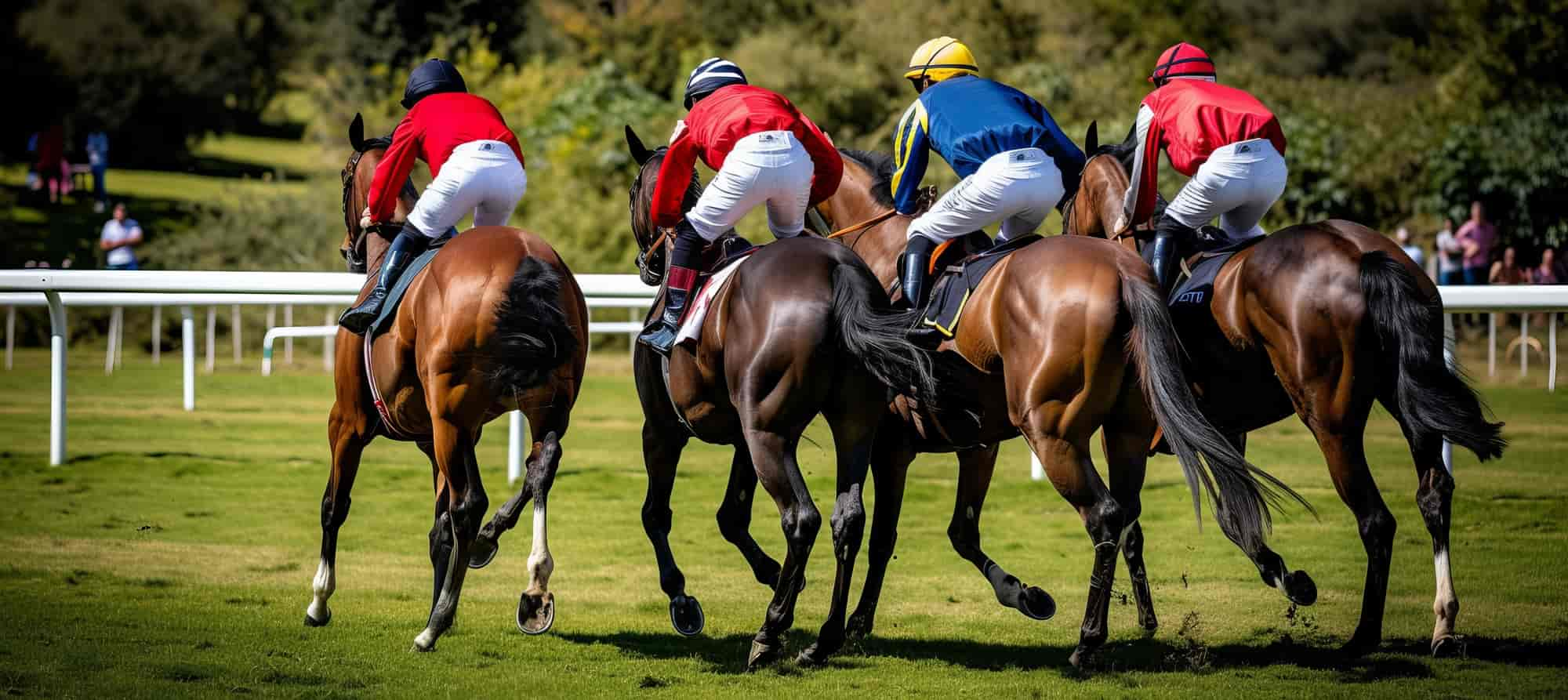The excitement of winning a highly unpredictable horse race draws many punters worldwide. For instance, the UK’s premier horse racing event, the Grand National, attracts about 13 million bettors annually—a third of the country’s total adult population.
Selecting the right horse to bet on in a race is both an art and a science. While a lucky guess can play a role, crafting a strategy based on facts and data can dramatically increase your chances of picking winners.
You equip yourself to make informed selections as you examine key considerations from past and current performances to track conditions. Ultimately, approaching each race as a puzzle to solve will serve you well.

Past performances form the cornerstone
Before placing bets, the majority would study a horse’s past performances. Doing so provides the foundation for evaluating a Thoroughbred’s readiness to run a strong race. The following variables are often the most essential:
- Class of races it has run
- Past speed figures
- Records at the current track or surface
This dataset reveals patterns to determine whether a horse faces easier or tougher competition today and whether the distance suits its running style. Additionally, look for horses progressing up in class or dropping down. Moving to an easier field often leads to better performances. However, don’t automatically toss out horses stepping up or rapidly improving.
Horse racing websites have a wealth of resources on each runner’s past and recent performances. For instance, this site contains detailed historical and updated information on Sydney Cup winners, dates, venue, prize pot, field and form guides, barriers, etc. Each featured race has a dedicated page that condenses all the essential information to help you.
The current form makes a great indicator
Along with past records, a horse’s current form merits consideration when handicapping a race. Is your chosen runner performing well in the current races? Finishing ‘in the money’ or the top three, putting up swift workouts, or strong speed figures often indicate increased chances of winning.
On the other hand, look twice at horses coming off the board for three months or longer. While time off may rejuvenate some runners, others need a prep race before regaining peak fitness. It’s equally important to note significant jockey or trainer changes that can reinvigorate a horse’s racing prospects—which we’ll talk about in the next sections.
Pace and trip plot the runner’s journey
It takes more than raw talent for a horse to reach the winner’s circle. The pace and trip that unfold during the race influence a runner’s chances to cross the finish line first, no matter how capable it looks on paper. Pace refers to the horse’s running speed and style. At the same time, a ‘good trip’ describes a Thoroughbred that didn’t have difficulties during the competition.
When studying horses’ running styles, separate stalkers and closers from front runners and pacesetters. Horses on or near the early lead are susceptible to setting more contested fractions that tire them out later. Closers coming from off the pace have more fuel in reserve but require pacesetting rivals to carve out an honest tempo up front.
Jockey selection is an underrated influence
The trainer plays a pivotal role in optimizing performance on race day. However, an experienced jockey ultimately manages a horse’s energy and maneuvering through the field better than exercise riders do daily. So consider carefully why a trainer chooses a particular rider for the race.
Certain jockeys excel at front-running types, while others are specialists at come-from-behind victories. Whatever the case, don’t automatically favor name-brand riders without considering their chemistry with the runner. Sometimes, lesser-known yet tactically savvy athletes best serve the horse.
More importantly, gender isn’t a big issue when choosing the right jockey, a 2022 University of Nottingham study revealed. While an estimated 90% of them are males, females have shown increased participation in horse racing. The said research found out that ‘female jockeys have the same winning percentage as men’ in the UK, while male jockeys have higher rates in Australia based on total race starts—but it’s the opposite when looking at top three race finishes.
Watch the warmup for the final assessment
What you witness right before post-time carries weight too. Take notes on horses appearing distracted, anxious, or unprepared in the paddock and near the starting gate. Look for signs like refusing to load, acting up or sweating prematurely, indicating that readiness could be compromised.
Then, as horses walk onto the track, assess the fitness on display. Smooth, energetic stride and muscle tone denote conditioning. Make final judgment calls on any horse deviating from positive early impressions gleaned during your handicapping. Let the warmups guide you.
Pedigree, age, and post
A horse’s family history, maturity level, and starting gate spot carry weight in reaching the winner’s circle. Top bloodlines have higher chances of excelling at specific distances or surface types. Legacy stallions pass speed and stamina capabilities to their offspring, making them ideal for certain race dynamics.
Age matters
Additionally, factor in age. Sophomores may still progress from race to race, while older horses level off in development. Remember this when comparing three-year-olds with prime four- and five-year-old runners. As an aside, 2021 research showed Thoroughbreds trained at two years old had ‘more lifetime starts, wins, money earned, and racing years.’
Barrier draws
Lastly, consider inside posts versus far outside draws based on the length of the opening sprint. Rail-skimming types or committed front runners fare best with forward post positions offering straight-line departure. Blocked trips can ruin even the strongest runner’s opportunities when it lacks the room to move. Conversely, savvy closers can break wide gains with enough maneuvering room to weave through traffic trouble.
So note pedigree, maturity, and post position, as they can either boost or negatively impact a Thoroughbred’s raw ability and performance.
Going beyond the facts
After weighing statistics and figures to gauge probability, tolerate some educated guesswork based on intangibles that defy quantification—just like you would when playing online casino games and sports betting.
While hunches shouldn’t override sound data, a sprinkling of intuition can tip the scales when logical contenders appear evenly matched on paper. Allowing for some flexibility keeps you open to horses poised to blossom into winners.
The takeaway
Selecting horses with a strong chance of winning goes beyond studying past performances and figures. By emphasizing current form, planning favorable pace and trip scenarios, and considering that extra spark of potential, you prepare to identify winners at both short and long prices.
While skill and knowledge drive the process, racing also offers plenty of suspense and excitement. Enjoy the analytical and emotional side of the ‘Sport of Kings’ as you progress to handicapping success.










